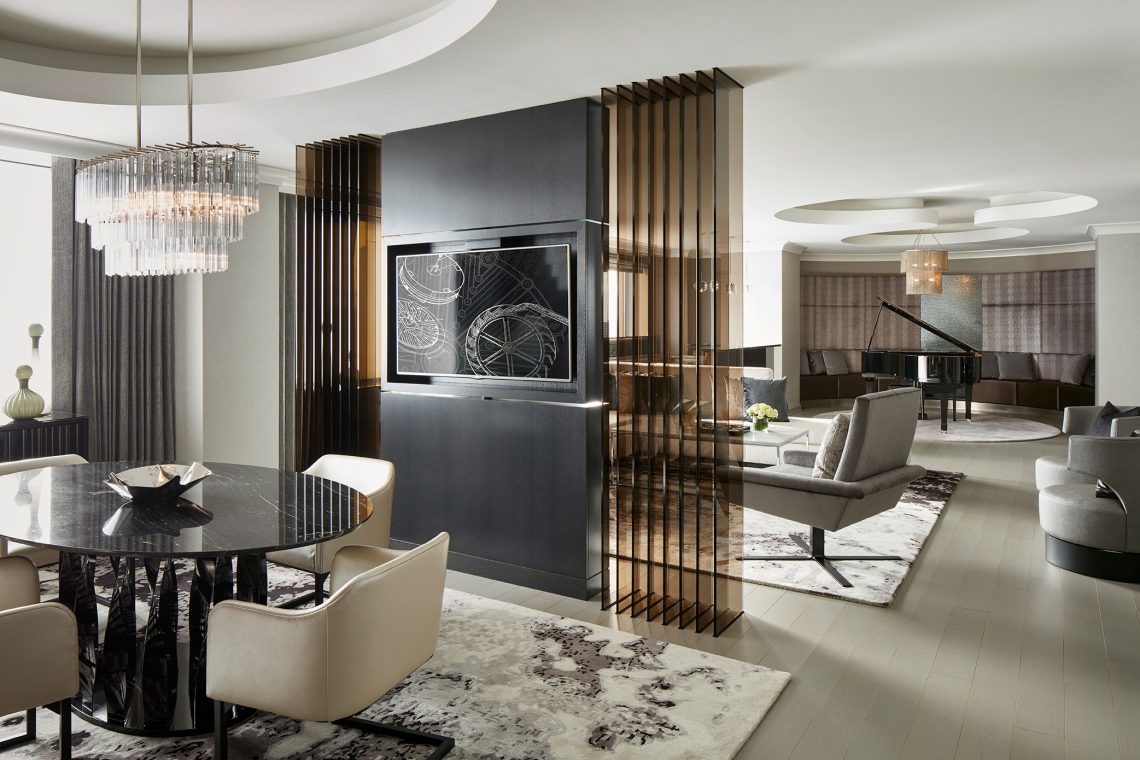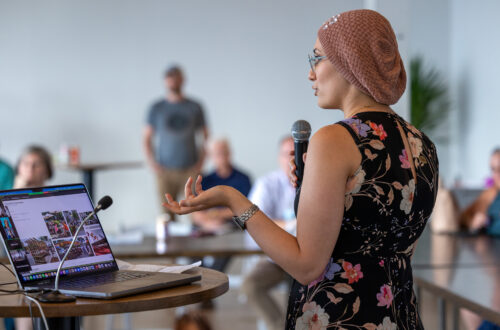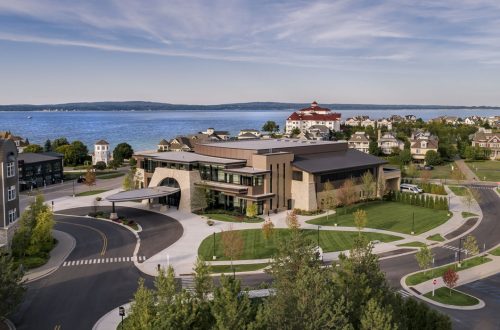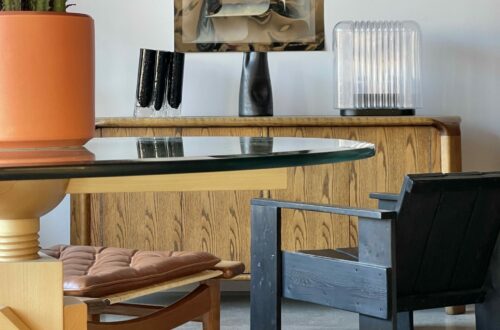“We’re not just designers,” said Lisa Simeone, owner and co-founder of the Chicago-based interdisciplinary design firm Simeone Deary Design Group. “We’re much more than that now.”
At Simeone Deary Design Group, where designed spaces are tailored to guest behaviors and expectations, the work goes well beyond design to ultimately reflect a love story of light, shape, and form. Each team member at the award-winning hospitality group has more than a singular task, but rather a holistic one as the hospitality design sectors continues to adapt and evolve with time. From brand curators, interior architects, and seasoned researchers, to historical translators for the designed environment and experiential curators for an ever-evolving industry, Simeone Deary Design Group is a team of interdisciplinary thinkers creating narratives defined by place.
“It’s interesting, because hotels used to be a place where just business travel happened or leisure—they weren’t really together; but after 9/11, hotels [started] being designed for both the travel and leisure guest and they were becoming more residential,” said Gina Deary, owner and co-founder at Simeone Deary Group. “[Guests] go to them and want an experience, so that’s what the boutique design industry has done: it has created an experience for people.”
Established in 2002, Simeone Deary Design Group reflects a shared interest of stepping outside traditional bounds as Simeone and Deary sought to create a firm prioritizing the creative process and inspired collaboration with their clients. In co-founding the design firm, which has since developed a high-end portfolio of hospitality projects and global reach, both Deary and Simeone brought a unique perspective to the table: Deary had experience in the restaurant design field, while Simeone brought a background in psychology and interior design. Together, their collective approach covers deep and layered conceptual development reflecting the regional and historical context of a building or site down to the minute detail in its design and branded makeup. It is a thorough process of gathering empirical data and conducting primary research before converting it into a designed guest experience.
“Interior architecture and interior design are a huge component [of hospitality design], but really understanding how guests live in and react to a space and what they take away from a space is critical to designing it,” Simeone said. “It really is a big part of what we do and what we bring to our projects.”
The idea of guests living in a branded or boutique hotel is a unique indicator of the design group’s own mindset: to consider everything that could possibly be needed to make an experience immersive or memorable amid hundreds of transient interactions. Beyond comfortable suites and navigable lobbies and amenities, there are several experiences hotels offer since the by-gone times of business versus leisure travel, whether as social hubs for local communities or spaces with destination culinary experiences.
As experiential designers, Simeone Deary is well-versed in these multi-faceted, livable hospitality spaces, and has designed more than a hundred internationally. Their work appears in luxury resorts, culinary experiences, boutique and branded lifestyle hotels, as well as conventional hotels, new-build, and adaptive reuse projects that see the firm’s team of more than 50 principals, designers, and professionals in roles from interior architect to art installers. Saturated markets like Chicago, Miami Beach, and Austin are familiar contextual landscapes for the Simeone Deary Design Group team, but the two leaders at the helm also pay fond attention to “secondary markets” where exclusive pockets of design potential can lay largely unmined.
“We do all types of projects—new builds, renovations—but a nice sweet spot are these repurposed buildings and building for secondary markets; we love them, because I think it’s a very uncapped area,” Deary said. “People that aren’t from secondary markets tend to think that they’re homogenous and they’re just not. It’s really a great feeling to be able to bring high design to people who are consistently underestimated in the market space.”
Within the Simeone Deary portfolio, secondary markets could be considered places like La Crosse, Wisconsin, where the team infused The Charmant Hotel with rich materials and a color palette evoking its flavorful past as a candy factory; or Kansas City, Missouri, where they referenced the former Kansas City Club building’s iconic life as a 1920’s social club in its new re-use as a boutique hotel and culinary hub. Regardless of market or region, the group’s design process begins similarly, with a sweeping approach to research and a deep investment in authentic and compelling conceptual pillars that, once solidified, go on to inform a project from start to finish.
“It’s very important for us to not go for the low-hanging fruit in terms of stories; obviously there’s something that everybody knows about a place or building, but we like to go for something that’s a little obscure or provocative or left-of-center, and these are the stories that really drive us and interest us the most,” Simeone said.
Full text available in Great Lakes By Design: Raising the Bar, 2020
Text: R. Collins
Photography: Nathan Kirkman





